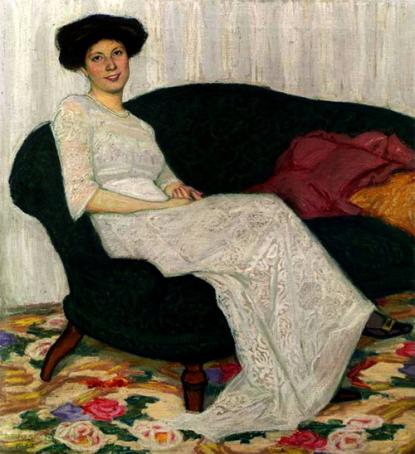2024. May 19. Sunday
Hungarian National Museum - Budapest
 |
Address: 1088, Budapest Múzeum körút 14-16.
Phone number: (1) 338-2122
E-mail: info@hnm.hu
Opening hours: Tue-Sun 10-18
|
The exhibition has closed for visitors.
2008.01.28. - 2008.03.24.
Museum tickets, service costs:
|
Ticket for adults
|
1100 HUF
|
|
|
Ticket for students
|
550 HUF
|
|
|
Ticket for soldiers
|
550 HUF
|
|
|
Ticket for pensioners
|
550 HUF
|
|
|
Ticket for families
(2 adults + children)
|
1150 HUF
|
/ family
|
|
Individual guide
|
400 HUF
|
/ capita
|
|
Group guide
(max. 5 people)
|
1800 HUF
|
/ group
|
|
Group guide
(11-15 people)
|
6000 HUF
|
/ group
|
|
Group guide
(max. 15 people)
|
5500 HUF
|
/ group
|
|
Group guide
(16-25 people)
|
9700 HUF
|
/ group
|
|
Group guide
(1-5 people)
|
1500 HUF
|
/ capita
|
|
Group guide
(6-10 people)
|
13000 HUF
|
/ group
|
|
Group guide
(11-15 people)
|
16000 HUF
|
/ group
|
|
Group guide
(16-25 people)
|
24000 HUF
|
/ group
|
|
Group guide for students
(max. 25 people)
|
4500 HUF
|
/ group
|
|
Group guide for students
(max. 15 people)
|
6000 HUF
|
/ group
|
|
Group guide for students
(max. 25 people)
|
12000 HUF
|
/ group
|
A collector of artworks writes the history of art with pictures instead of words. His method is mostly based on intuition. However, with the growing number of artworks, everything that was only a presumption at the beginning becomes perceptible.

Historians often place well-known facts side by side to come to a conclusion. Nevertheless, it is more exciting to go backwards and find whatever can be considered creative work. The pictures collected attract information related to them as if magnets. The content of scattered documents can be related all of a sudden and the pieces of the mosaic draw up a picture. Dezső Saphier is in search of everything of which he believes have been put offside by art historians with avant-garde dynamism and audacity. This is how he brought the lost world of female characters onto the surface. It was his decision not to look for acclaimed artists since they, well deserved, were part of the curriculum of which the borders have been more or less closed by now.
The statement: "there has been a female art" suggest a question asked: is their a distinguishing feature that makes the independent study of the topic rightful? We find two views on the topic: there is only one art, female and male art is not separate. Others believe that there is a thing called "female art" with its own characteristics. Our exhibition does not intend to provide of a final answer but gives opportunity for us to go on thinking while it also offers an interesting point of view on Hungarian art.
The number of female artists is not less than that of males’. However, in the eras considered, they were overshadowed in many areas of life. Despite of all this, the female painters whose artworks are included in the Saphier Collection had the opportunity to learn since most of them were born into high society. They also had the chance to exhibit... all regular exhibitions include artworks by women. - said a critic at the beginning of the 1930's. It's a shame, but it is posterity that treated them wrong. Exhibition in the first part of the 20th century regularly ignored female artists not only in Hungary but also abroad. Female art was put in focus a little late. As an independent topic, female art was discovered in the past few years only. This shows the approach and spirituality that has existed before but the time of disclosure came just then. Potentiality turned to actuality. This is why it is high time that the showing of the Dezső Saphier Collection effected the viewer with the power of a fresh experience and made us think deeply and not with ignorance.
The topics of female painters are correlated with fine art traditions. Despite of this, we can talk about "female iconography" keeping in mind the individual interpretation of usual topics. Women write differently from men. It is not an exaggeration to say the sex of the painting on the easel is already decided on the palette even if the instinctual motion of the hand is displaced by the educated hand. Of course, one of the questions we are mostly interested in is how the women saw themselves, their identity that was nothing but mere motifs on paintings by men.

Historians often place well-known facts side by side to come to a conclusion. Nevertheless, it is more exciting to go backwards and find whatever can be considered creative work. The pictures collected attract information related to them as if magnets. The content of scattered documents can be related all of a sudden and the pieces of the mosaic draw up a picture. Dezső Saphier is in search of everything of which he believes have been put offside by art historians with avant-garde dynamism and audacity. This is how he brought the lost world of female characters onto the surface. It was his decision not to look for acclaimed artists since they, well deserved, were part of the curriculum of which the borders have been more or less closed by now.
The statement: "there has been a female art" suggest a question asked: is their a distinguishing feature that makes the independent study of the topic rightful? We find two views on the topic: there is only one art, female and male art is not separate. Others believe that there is a thing called "female art" with its own characteristics. Our exhibition does not intend to provide of a final answer but gives opportunity for us to go on thinking while it also offers an interesting point of view on Hungarian art.
The number of female artists is not less than that of males’. However, in the eras considered, they were overshadowed in many areas of life. Despite of all this, the female painters whose artworks are included in the Saphier Collection had the opportunity to learn since most of them were born into high society. They also had the chance to exhibit... all regular exhibitions include artworks by women. - said a critic at the beginning of the 1930's. It's a shame, but it is posterity that treated them wrong. Exhibition in the first part of the 20th century regularly ignored female artists not only in Hungary but also abroad. Female art was put in focus a little late. As an independent topic, female art was discovered in the past few years only. This shows the approach and spirituality that has existed before but the time of disclosure came just then. Potentiality turned to actuality. This is why it is high time that the showing of the Dezső Saphier Collection effected the viewer with the power of a fresh experience and made us think deeply and not with ignorance.
The topics of female painters are correlated with fine art traditions. Despite of this, we can talk about "female iconography" keeping in mind the individual interpretation of usual topics. Women write differently from men. It is not an exaggeration to say the sex of the painting on the easel is already decided on the palette even if the instinctual motion of the hand is displaced by the educated hand. Of course, one of the questions we are mostly interested in is how the women saw themselves, their identity that was nothing but mere motifs on paintings by men.
